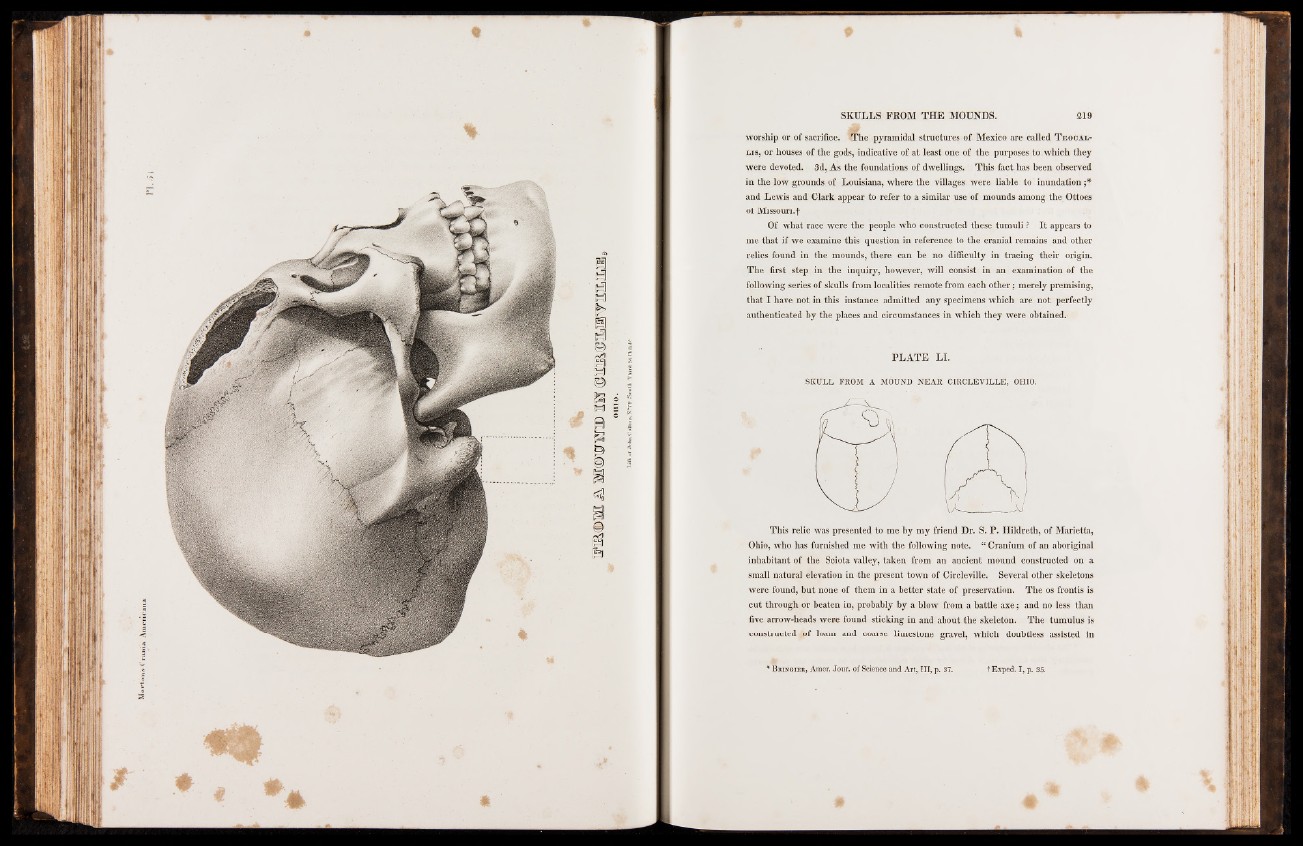
sacKE a asr ©m©Mwi
worship or of sacrifice. tThe pyramidal structures of Mexico are called T eocal-
l is, or houses of the gods, indicative of at least one of the purposes to which they
were devoted. 3d, As the foundations of dwellings. This fact has been observed
in the low grounds of Louisiana, where the villages were liable to inundation;*
and Lewis and Clark appear to refer to a similar use of mounds among the Ottoes
of Missouri.f
Of what race were the people who constructed these tumuli ? It appears to
me that if we examine this question in reference to the cranial remains and other
relics found in the mounds, there can be no difficulty in tracing their origin.
The first step in the inquiry, however, will consist in an examination of the
following series of skulls from localities remote from each other; merely premising,
that I have not in this instance admitted any specimens which are not perfectly
authenticated by the places and circumstances in which they were obtained.
PLATE LI.
SKULL FROM A MOUND NEAR CIRCLEVILLE, OHIO.
This relic was presented to me by my friend Dr. S. P. Hildreth, of Marietta,
Ohio, who has furnished me with the following note. “ Cranium of an aboriginal
inhabitant of the Sciota valley, taken from an ancient mound constructed on a
small natural elevation in the present town of Circleville. Several other skeletons
were found, but none of them in a better state of preservation. The os frontis is
cut through or beaten in, probably by a blow from a battle axe; and no less than
five arrow-heads were found sticking in and about the skeleton. The tumulus is
constructed of loam and coarse limestone gravel, which doubtless assisted in
Bringier, Amer. Jour, of Science and Art, III, p. 37. tExped. I, p. 35.